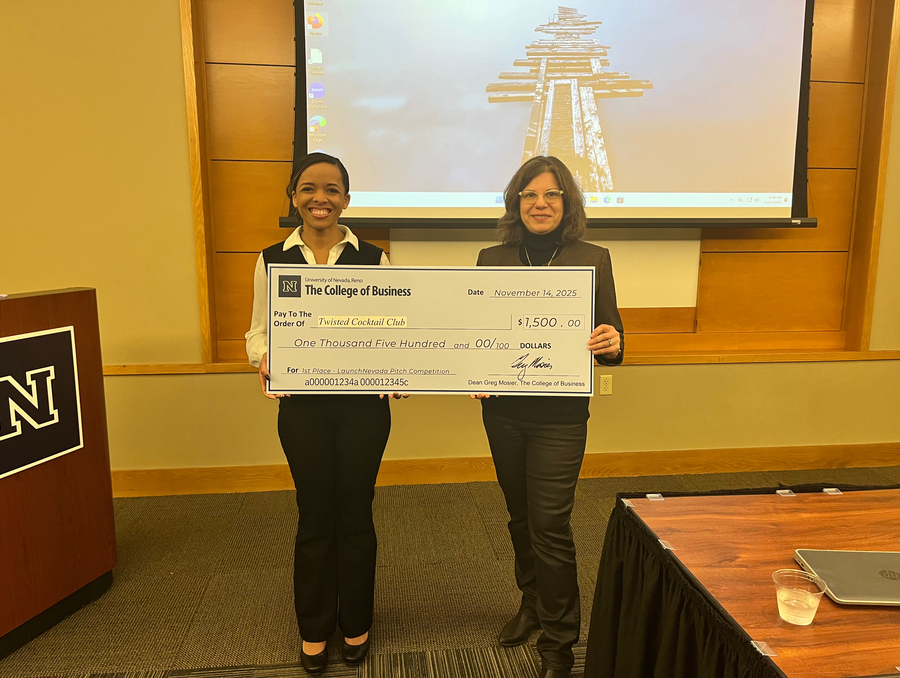The Center for Molecular Medicine is the first new research facility going up at School of Medicine in 30 years.
A look to the north end of the University of Nevada, Reno campus will garner a view of the growing skeleton of the first new research building going up at the School of Medicine in nearly 30 years.
Construction on the Center for Molecular Medicine has been underway since last December and general contractor Clark and Sullivan Construction is making tremendous progress on the $79 million research facility to be shared by the School of Medicine, the Whittemore Peterson Institute for Neuro-Immune Diseases and the University of Nevada, Reno Center for Aging.
“This project is going very well from my perspective,” said Lyle Woodward, the University’s director of facilities and project manager for the Center for Molecular Medicine. “The contractor (Clark and Sullivan) is working aggressively to beat the completion date (fall 2010).”
More than 200 of the region’s best tradesmen are currently crawling over the construction site working on fire suppression, temperature control, plumbing, electrical, structural steel, masonry, concrete, landscaping, elevators, windows and sheet rock. After this work is complete, painters, ceiling installers and ceramic tile installers will put the finishing interior touches on the facility.
Nestled between the current basic science research quadrangle at the School of Medicine and McCarran Boulevard, the Center for Molecular Medicine will house the research programs in cancer biology, infectious disease, cardiovascular disease, gastrointestinal disease and neurosciences and serve as the headquarters for the Whittemore Peterson Institute for Neuro-Immune Disease and the University of Nevada, Reno’s Center for Aging.
The 107,000-square-foot building, designed by architects Dekker/Perich/Sabatini, is divided into two wings. The west wing will house laboratory space and a vivarium for components of School of Medicine’s basic science research programs. The east wing will house the Center for Aging on the first floor and the Whittemore Peterson Institute for Neuro-Immune Diseases on the top two floors.
All entities in the center will share a lobby, two conference rooms and an auditorium. An as-yet-to-be-named café will also be on the first floor of the east wing to serve hot and cold sandwiches, soups and salads.
Woodward said the east wing exterior should be complete this fall and be weather-tight before winter sets in. The east wing roof already covers its three floors. Throughout the building, heaters will be brought in so work may continue during inclement weather later this year and into 2010.
Once construction is complete, parking access for the lots east of the Pennington Medical Education Building and Howard Medical Sciences Buildings will be changed to the north side of Enterprise Road and be marked by a sign. Each building in the health sciences complex will be individually marked with its name as is currently the practice on campus.
“This is a gorgeous building from an architectural standpoint,” said Thomas Kozel, Ph.D., professor of microbiology and immunology and the center’s project manager for the School of Medicine.
The Center for Molecular Medicine’s design is based on guidelines published by the American Institute of Architecture for biomedical laboratory construction and focuses on sharing technology, efficient use of research resources and intellectual interaction.
The center will be extremely energy efficient, separating research and administrative spaces in order to isolate heat-generating laboratory activities into areas with robust cooling capabilities. State-of-the-art safety and security measures are included in the design. The center will be an advanced technology resource for northern Nevada in attracting biotech industries while expanding the state’s scientific workforce that is needed for private sector investment.
Kozel said that the new building is the current step in a vision that began several years ago to increase the medical student class size, and consequently the number of faculty needed to teach them, at the School of Medicine.
Recognizing the need for improved health outcomes across the state, the University of Nevada School of Medicine and the Whittemore Peterson Institute joined forces to secure state funding for the Center for Molecular Medicine project during the 2005 legislative session. With the strong support of State Senator William Raggio (R-Washoe), Senate Bill 105 passed securing $10 million in support of the project’s public-private partnerships. Additional funding for the building stems from federal funds flowing from the research activities of all of the University’s research scientists.
At the heart of the Center for Molecular Medicine is the goal to improve the health outcomes of Nevadans through research and clinical care. Sharing the research facility with the Whittemore Peterson Institute will create a synergistic environment for scientists to work together to conduct cutting-edge research that leads to better treatments for patients.
The Center for Molecular Medicine will increase the research productivity and funding of the school’s basic scientists, increase its graduate student programs and attract biotech industries while expanding the state’s ability to pull in the private sector investment it needs.










